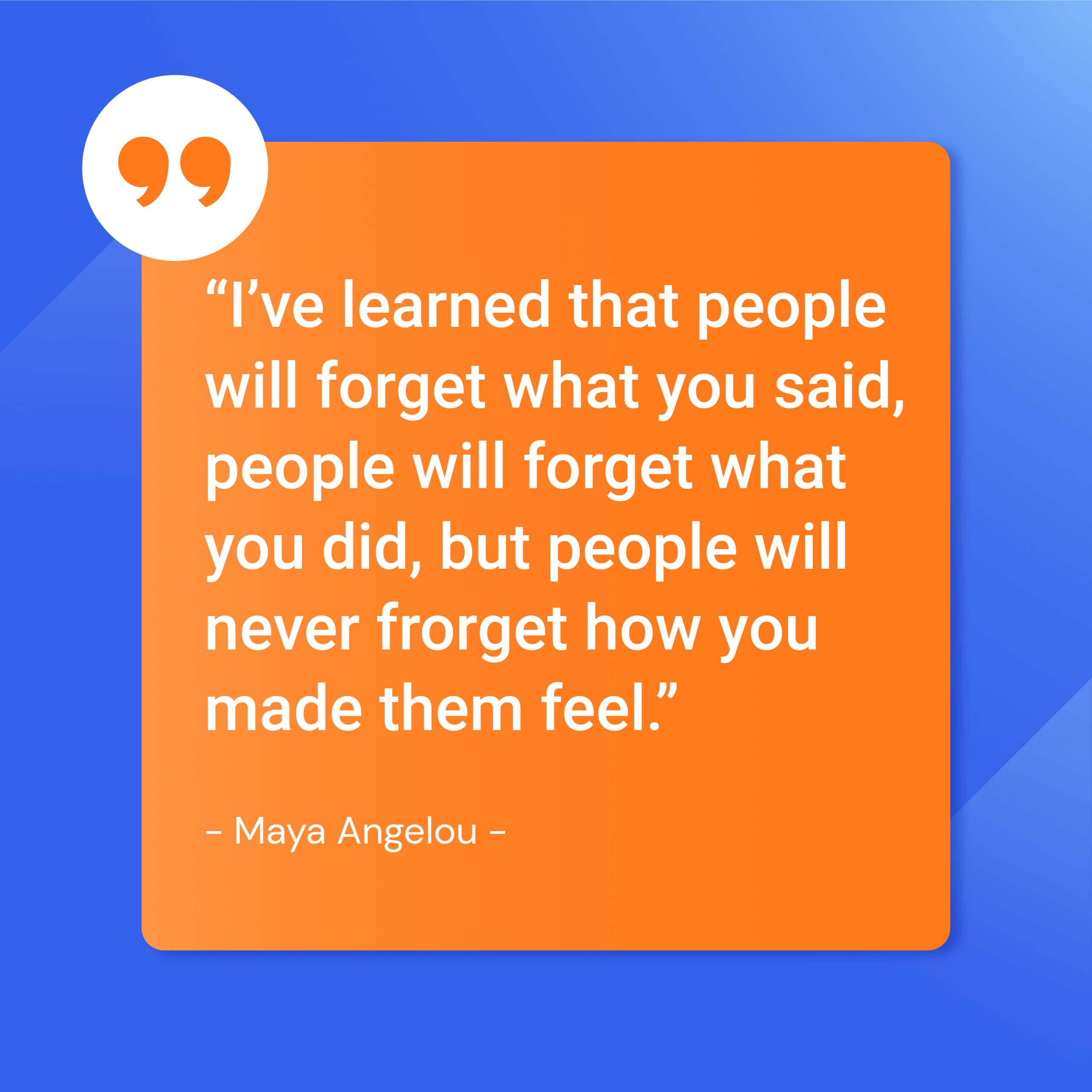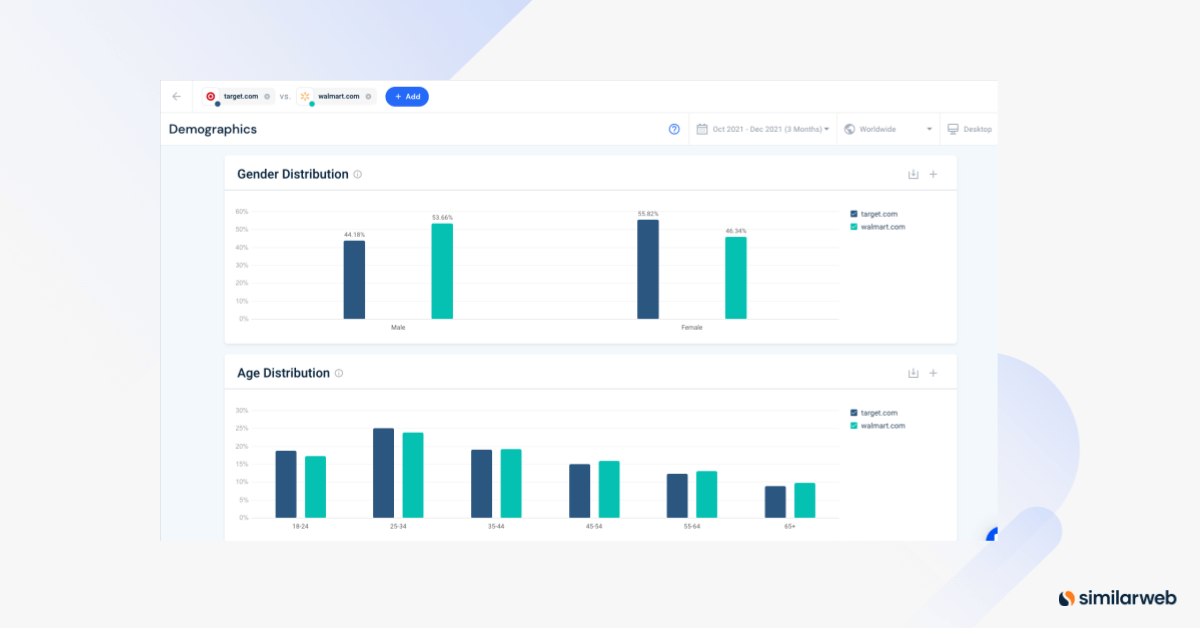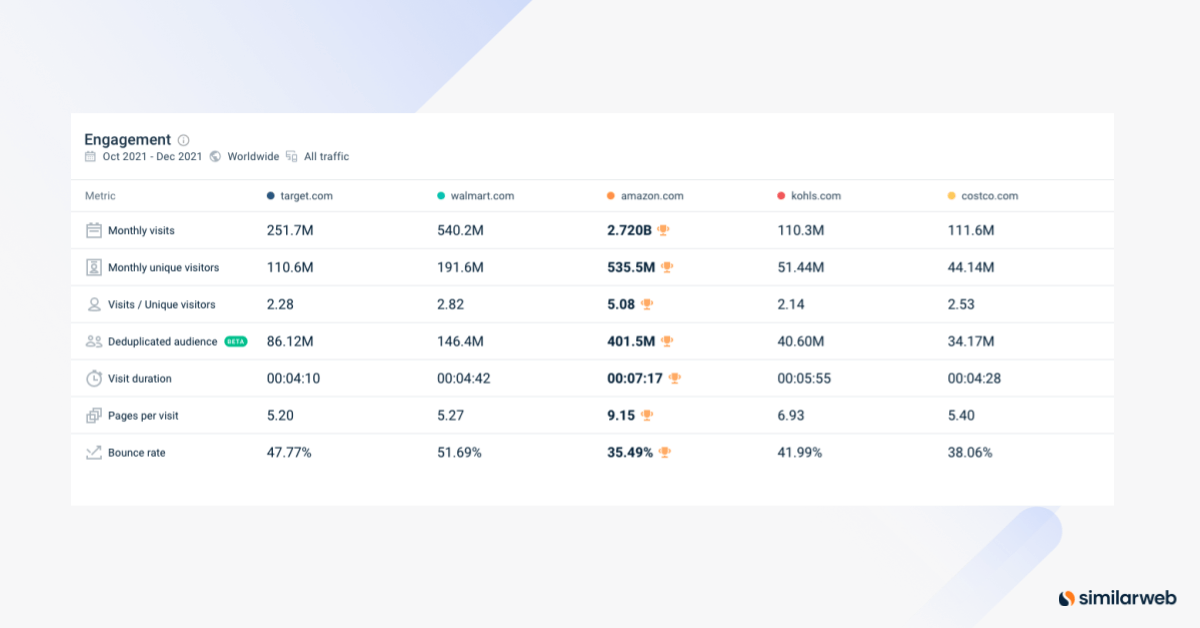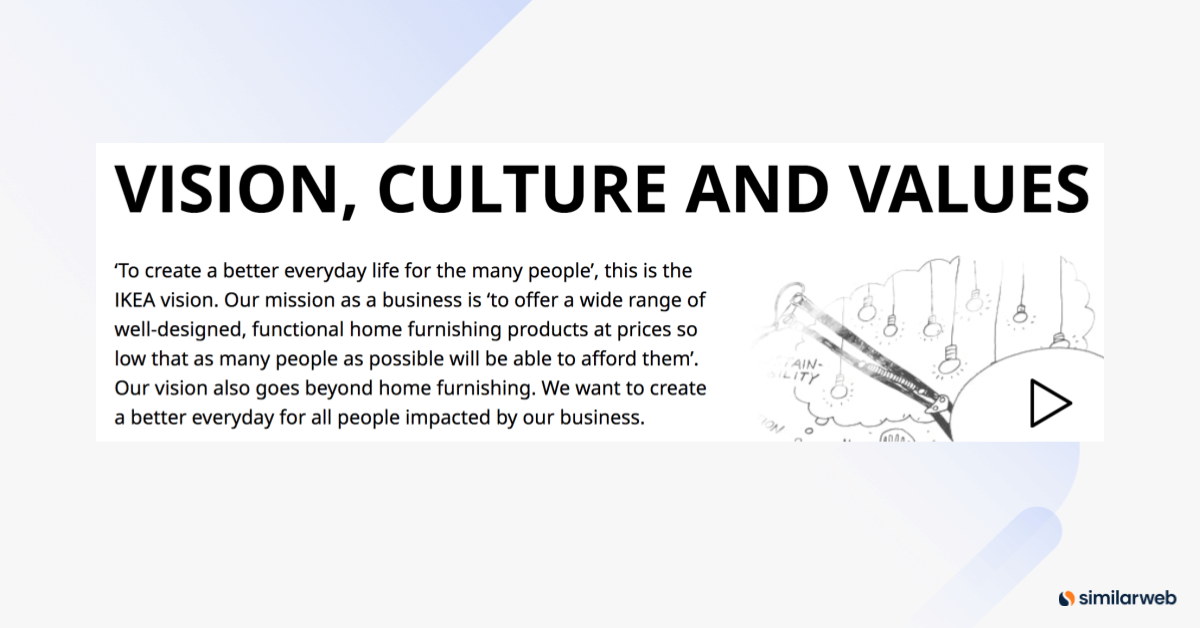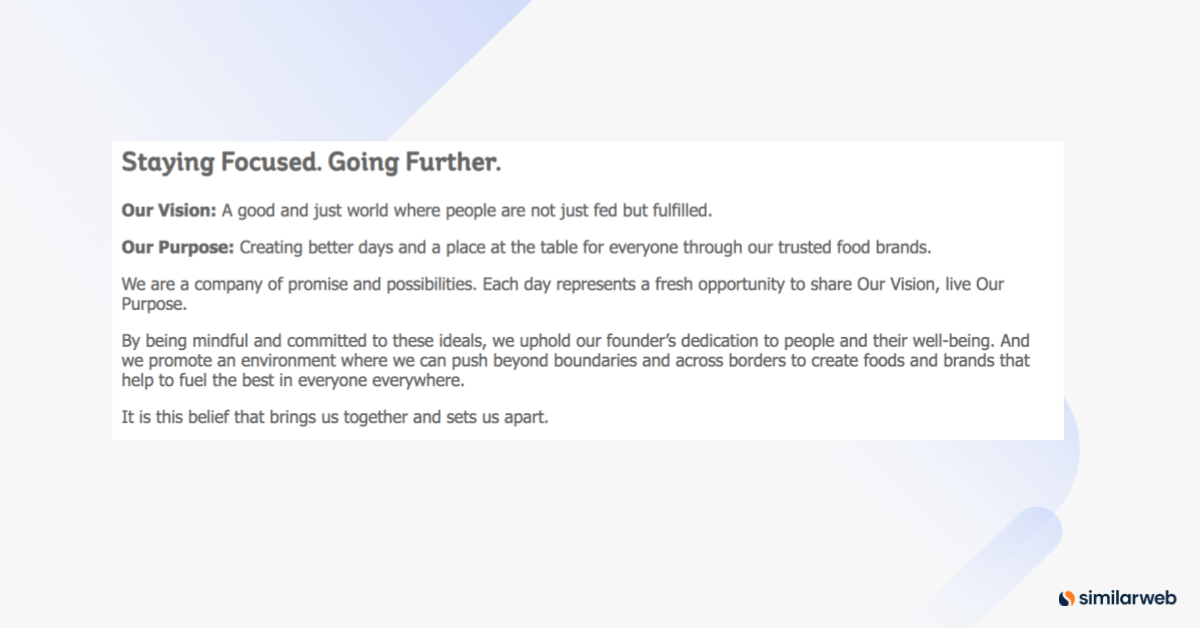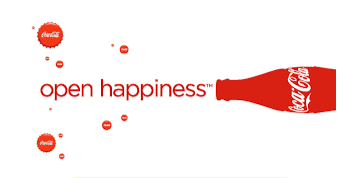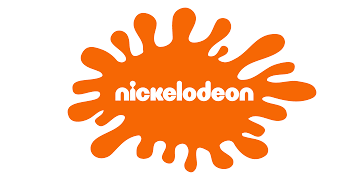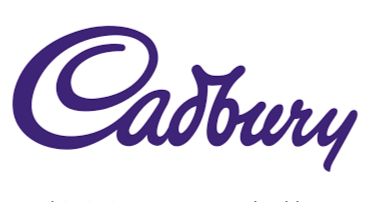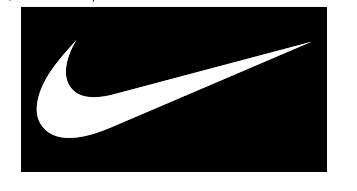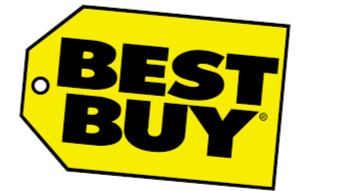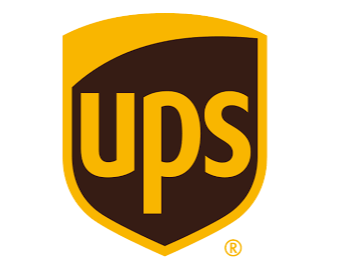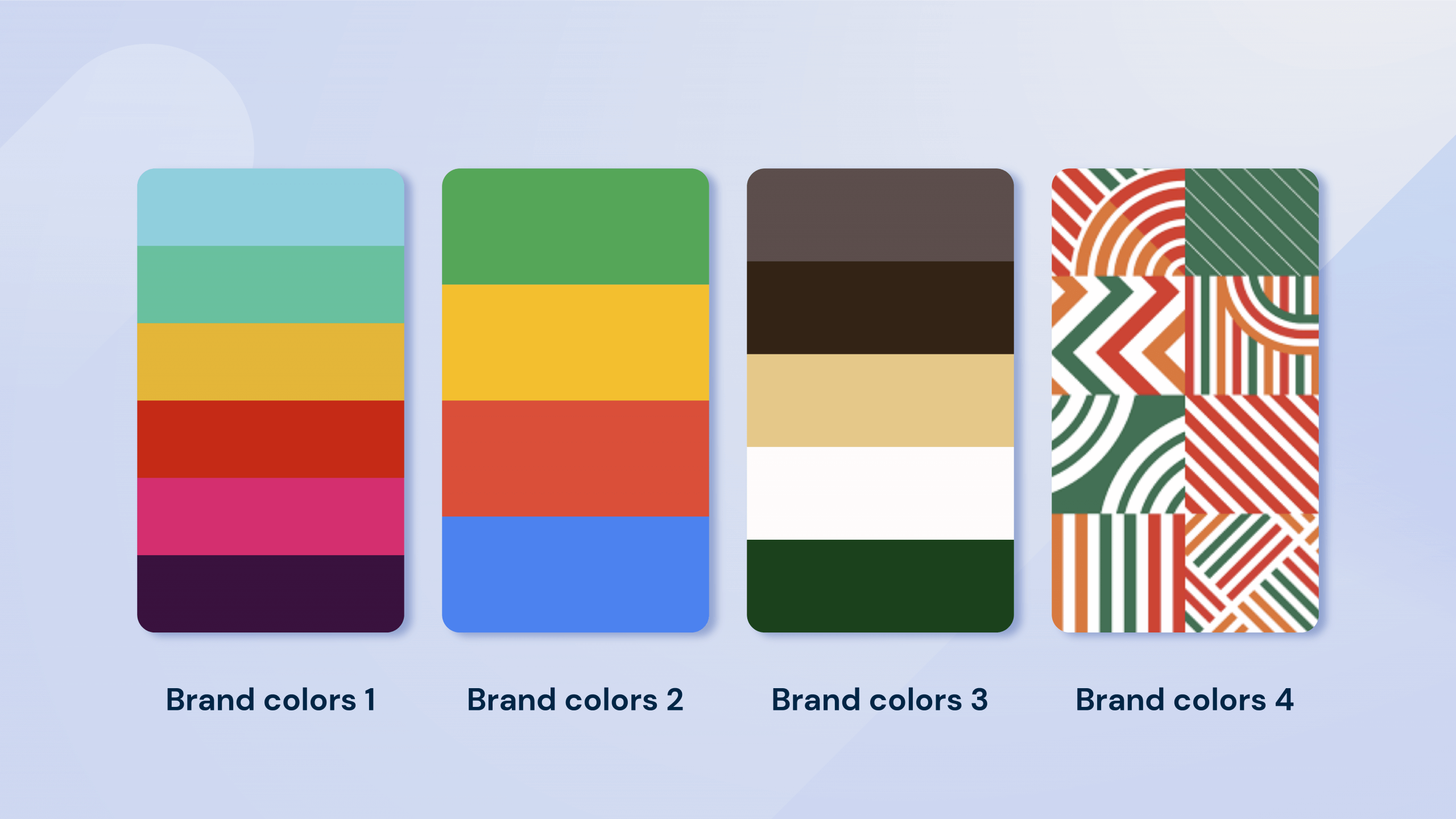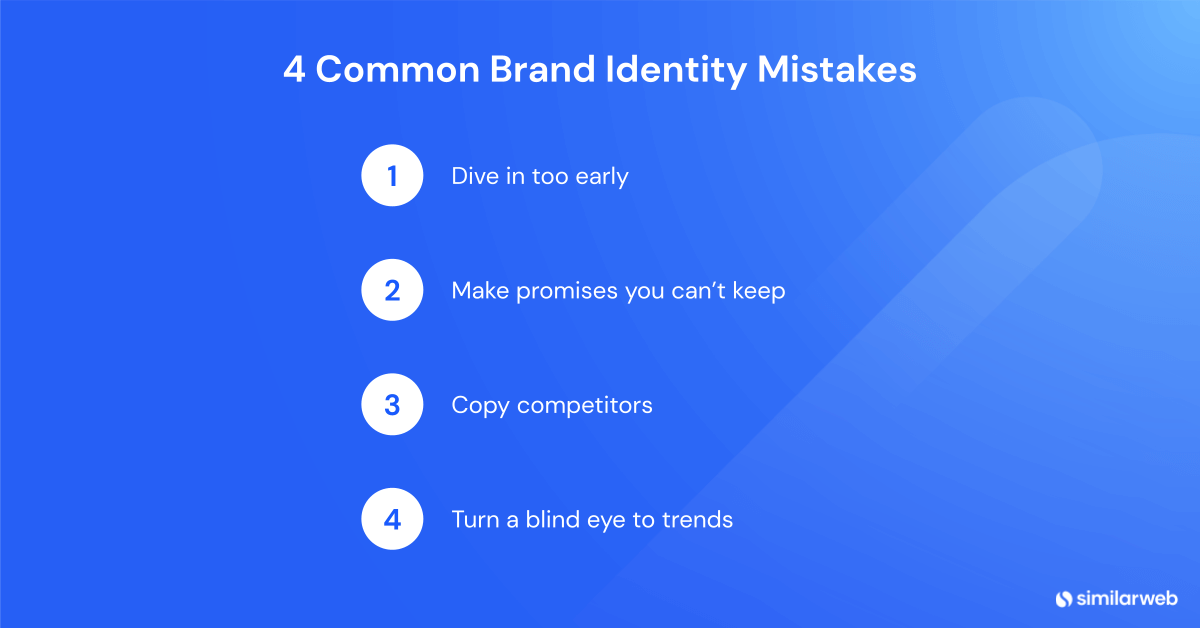How to Create a Brand Identity in 5 Steps

What do brand identity and Rome have in common?
Neither were built in a day and for good reason – creating a brand takes time. After all, how long did it take you to settle on your personal identity? Thirty years? Forty? Still in the works?
Brand identity is how you forge that essential link with your audience Tweet thisYour brand identity defines the unique “personality” of your business. It’s the way through which you paint a pretty picture of your company’s ethos, goals, and unique selling point (USP), and show it off to the waiting eyes of the world. Brand identity is how you forge that essential link with your audience, what people will buy into – how you’ll win new customers, re-engage with existing ones, and turn one-time buyers into lifelong brand ambassadors.
In a digital space now more saturated than ever before, brand identity is what helps your business stand out from the rest. If that is, you get it right.
So let us help.
Below, we walk you through everything you need to know to research, design, and implement a bankable brand identity – then monitor the traction it gets on the slippery streets of the online space.
We’ll also cover the basics – what brand identity is, why you should care about it, and what you shouldn’t do – as well as dive deeper into some of our favorite real-world examples of brand identity.
What is brand identity?
Dictionary.com defines “identity” as “the unique set of characteristics that can be used to identify a person as themselves and no one else” – as denoting “a person’s sense of self,” or “how they view themself compared to other people.”
Brand identity, then, is just that – but for your business.
A brand identity is how you utilize a range of specific signifiers to establish your business as unique vis a vis the competition.
These can include:
- Your name
- Your logo
- Your color palette
- Your typeface and font
- Your website design and layout
- Your tone of voice
- Your product packaging
Just as you might express your own identity through the clothes you wear or the music you listen to, so too can you use words and design to cultivate the character and flavor of your brand.
Your brand identity isn’t just how your business looks to people, but how it speaks to them. It’s how your brand makes your audience feel: The kind of associations they make with it, the characteristics they attribute to it, and the way in which they forge a – hopefully longstanding – relationship with it.
The importance of brand identity
Though your logo, palette, and tone of voice are all key, developing a strong brand identity doesn’t come from words or colors alone. It’s about the bigger picture – how you use storytelling techniques and visual consistency to build a narrative around your brand and draw a connection with consumers.
Brand identity has a role to play at every stage of the customer lifecycle: whether that’s winning new business, nurturing your current customers, or – ultimately – keeping them!
Here are three reasons why you should prioritize building a strong brand identity in 2022.
1. It differentiates your business
In a world where there’s always a business selling similar products at lower prices, a solid brand identity can be all that separates you from the wannabes.
The best brand identities serve as marks of trust; as beacons of familiarity and reliability that customers can use to separate the wheat of your brand from the chaff of the competition.
2. It helps you connect with your customers
With a strong brand identity, you can make more meaningful connections with your customers.
By writing in a way that resonates with them, and using color and design to effectively get your message across, the more likely they are to believe in, buy into, and bookmark your brand.
3. It enables you to provide a meaningful user experience
As we’ll get to shortly, consistency is key for a good user experience.
Whether your customer is reading one of your social media posts, emails, ads, or blogs, they need to feel like each one’s been written in the same tone and style. Defining this voice, then – both from a visual and verbal perspective – will be a vital part of establishing your business’s distinctive brand identity.
How to create a brand identity: 5 steps to success
With the what and why of brand identity neatly dispatched, let’s get to the heart of the issue – the how.
1. Research your audience and competitors
All good things start with thorough audience research. So before you whip the color wheel out – or start sketching logos – you’ll need to hit the books, first.
Start with a clear understanding of your audience. Remember, brand identity is all about building bridges; about spanning the gap between your company and your customer. If you don’t know who those customers are, exactly, how can you ever hope to develop an identity that speaks to them?
To begin, you’ll need to drill down into your website’s demographics – something Similarweb makes simple.
If you’re building out your brand identity from scratch – you can use our Web Industry Analysis tool to explore age and gender demographics for your industry’s audience. If you’re a more established business – and your brand identity work is an overhaul, rather than a start-from-scratch job – you can grab audience demographics from your own site, too.
Plus, with in-depth demographic audience analysis, you can not only learn more about your exact target market but also create accurate buyer personas. These are archetypes that represent your ideal customer, taking real-world estimates of their gender identification, location, age, income, and education to give you a clear picture of who you’re selling to.
Once you have a better sense of the kind of crowd you’ll be targeting, you can reach out to them directly with a few market research questions, such as:
- What’s your level of education?
- What’s your profession?
- What’s your household size?
- How much money do you make?
- Which ethnic/cultural group do you identify with?
- Where do you live?
Of course, audience analysis tells only half of the story. To build a strong, unique brand identity, you’ll also need to develop a crystal clear understanding of where that audience spends their time online – a.k.a. your competition. Not only will this provide inspiration for your own burgeoning brand identity, but help you identify untapped niche audiences, as well as gaps in your rivals’ offerings.
This is also an area where Similarweb can help. Our competitor intelligence analysis tools let you benchmark your brand’s current engagement metrics against the rest. You can zoom in on the leading websites in your niche and figure out what they’re doing well, then use this insider knowledge to inform your own brand identity.
2. Audit your existing brand and figure out what you stand for
To build a brand identity, then, you’ll need to know who you’re selling to, and who you’re up against. But you’ll also require an iron-clad idea of who you are, too.
This can be neatly summarized by your business’s “North Star” – that is, its mission, vision, and values.
- A vision focuses on the future: where you want your brand and business to be one, five, or ten years from today.
- A mission is the here and now – how you’ll get from where you are to where you want to be.
- Your values are the principles and purpose that drive your business. You don’t just exist to make money, right? Have a think about your brand’s philosophy, its impact within the wider world, and the role it can play in bigger-picture issues, such as sustainability and fair trade.
Most of us, for instance, are familiar with Swedish homeware provider IKEA’s selection of modular, easy-to-install (at least in theory) furniture. What less of us know, though, is that this is all a product of IKEA’s mission “to offer a wide range of well-designed, functional home furnishing products at prices so low that as many people as possible will be able to afford them.”
Vision statements are allowed to be a little more ambitious. Consider Amazon’s goal “to be the world’s most customer-centric company”, Walmart’s pledge “to become the worldwide leader of all retailing”, or our own (slightly more humble) objective.
However, vision statements are also a great place to underline your commitment to something beyond profit or growth. Consider, for example, Unilever’s promise to “make sustainable living commonplace”, or Kellogg’s vision of “a good and just world where people are not just fed but fulfilled”.
Your brand identity should be the physical manifestation of your values and vision – so it’s impossible to build one without knowing exactly what you stand for.
If you’re a company of one, this process could be as simple as sitting down with a pen and paper and jotting down some ideas. For larger enterprises, it may be more intensive and involve roping in board members and stakeholders.
Ask yourself (or your stakeholders) some of the following questions to get started:
- Why are we in business?
- How is our product different from the rest of the competition?
- Why should our audience buy from us?
- Why should our audience care about us?
If you have an existing brand identity that you want to change, conduct a thorough audit of what your business means to people right now. Only with a proper understanding of what you don’t like about your current brand can you take your business in a new, exciting direction, and avoid the pitfalls of the past.
3. Design your logo and pick a color scheme
Armed with a grasp of your audience, competition, and brand values, it’s time to bring them to visual life – choose a color palette for your brand and design its logo.
But just how do you go about selecting a color for your brand? Is it as simple as choosing your favorite, or closing your eyes and picking one at random?
Spoiler alert: It’s not.
There are no accidents in the world of business. Every touchpoint you have with a brand is a product of years of strategic planning – including color. Our brains make implicit associations with different colors, and these have long been utilized by companies to – quite literally – ”paint a picture” of their brand.
As a general rule:
- Red conveys excitement or happiness (Coca-Cola, Pizza Hut, KFC, Budweiser, Red Bull, Lay’s, Target, Canon, Avis, LEGO).
- Orange implies warmth and helps stoke feelings of friendship and fun (Nickelodeon, Fanta, Penguin, Amazon, Headspace, and, ahem, Orange).
- Green ties into nature and sustainability, and connotes feelings of freshness, health, well-being, and new beginnings (Whole Foods Market, Land Rover, Spotify, Starbucks, Tropicana, Heineken, John Deere, Holiday Inn, Shopify).
- Blue suggests dependability and reliability; it’s a calming presence that, like green, also has natural, organic associations, and is linked with the sea, sky, and natural environment (American Express, Visa, Facebook, Ford, Dell, Bank of America, Skype, Pepsi, IBM, Oreo, HP).
- Purple relates to pedigree and quality; a distinguished company with a history of excellence (Cadbury, FedEx, Hallmark, Yahoo!, Wonka, Twitch, Syfy, Purple Bricks, Zoopla).
- White suggests slick, sleek products that are intuitive to use and enjoy (Nike, Adidas, Apple, and Puma).
- Black, on the other hand, suggests luxury or opulence (Chanel and Lancôme).
- Yellow is excitable, happy, energetic, and optimistic (Best Buy, CAT, MailChimp, Shell, Snapchat, Ferrari, McDonald’s, National Geographic, Chupa Chups).
- Brown implies accessibility and durability; these products are built to last, can be used by anyone, and attest to a brand that can be relied on. Chocolate and coffee companies love them, too! (UPS, M&M’s, Dreyer’s, Nespresso, Hershey’s).
Of course, few brands rely on a single color alone. Distinctive brand identities almost always use a combination of several colors and hues, mixing together different styles in a clever cocktail of character. We’d recommend starting with three colors – a base, an accent, and a neutral – but you can begin to build your brand identity around up to five different shades.
Take the classic red/yellow branding of McDonald’s, for instance. Why is it so effective?
For starters, red comes with associations with being active and stimulated, and yellow evokes happiness. Yellow’s also the easiest color to spot in daylight, while red can increase heart rate (and, ergo, appetite). Recently, however, McDonald’s has been pioneering being greener in its store branding – a colorful representation of its push towards healthier and more sustainable approaches.
For an example of just how potent the perfect palette can be for developing your brand identity, take a look at the following logo-less color schemes of famous businesses.
How many of the brands below can you name? Find the answers at the end of this section.
Of course, the color scheme is only part of it. To develop a really strong brand identity, you’ll also need a logo. For this, we have a few quickfire tips:
- Ensure it’s consistent. Don’t deviate from the palette you’ve just established – make sure your logo sticks to the same 3-5 colors to avoid overwhelming your customer.
- Make it memorable. Who can forget the KFC logo’s charismatic Colonel Sanders or Lacoste’s classy crocodile?
- Keep it appropriate. The WWF panda and Qantas kangaroo are fantastic brand icons, but they won’t work for all businesses.
- Keep it simple. After all, how many complicated logos can you think of off the top of your head?
- Make it versatile. Your logo should look good in a multitude of sizes, and in all variations of your brand colors.
Answers to the brand color questions: Starbucks, Google, 7-Eleven, Slack.
4. Define and implement your brand’s tone of voice
They say a picture’s worth a thousand words – and if you get it right, your logo will be worth even more.
That’s not to imply that words don’t matter. In fact, the content your business puts out will go a long way to help build your brand identity and forge those all-important ties with your target audience.
For a modern business, content takes many forms. You’ll use words to educate your customers about your product, generate interest, convert leads, and increase your brand’s industry authority. Think:
- Emails
- Blog posts
- Ebooks and white papers
- Social media channels
- Native advertising (using content delivery networks like Taboola or Outbrain)
- Pay-per-click advertising
Whether you want to grow organically via SEO-focused web articles or more quickly through paid advertising, content is the common denominator.
So what does all this have to do with brand identity?
Well, with all the channels you’ll be writing for, it’s vital to ensure consistency. Despite how many different writers you may have working for you, everything your business publishes needs to sound like the same entity, the same person. In other words, it needs to feel authentic to come across as both real and unique.
This is why defining your brand’s tone of voice is so important. Your tone of voice is less about what you say, and all about how you say it. It’s the way you address your audience, the language you use, and how you express yourself. Your tone of voice can also portray how your business feels about what you’re talking about, which helps like-minded consumers connect with your cause and character.
Your brand’s tone of voice will be directly tied to your mission, vision, and values – so it should be unique.
The tone of voice is also inextricable from what your company does. If you’re an independent Vancouver-based microbrewery, for instance, you’ll likely have a tone of voice that’s much different from a nationwide chain of supermarkets. Similarly, the “fun” tone of voice of, say, a party supplies business will differ from the more somber style of a funeral home.
So how do you nail your tone of voice and devise a style that best reflects your unique brand identity?
Here are our top tips:
- Be simple. Overly technical and jargon-stuffed sentences won’t make you sound smart – they’ll just confuse your reader! Keep things light, and do your best to explain complicated concepts in a way everyone can understand.
- Be conversational. Writing in a way that feels natural is one of the best ways to connect with your audience. Turn “it is” into “it’s”, “we have” into “we’ve”, and address your reader as “you” to evoke intimacy and establish a direct dialogue.
- Be engaging. Pepper your copy with a mix of short and long sentences throughout, and break up any paragraphs of more than four or five lines. Ask lots of questions, and throw in rich media such as videos, infographics, charts, tables, and quizzes.
- Be concise. No one wants to read you waffling on. Only ever write what you need to to get your point across.
- Be human. Don’t write as a business, but as the human behind said business. Draw upon your own stories and unique life experience, and – where appropriate – use humor and analogies to tell your brand’s story.
Once you’ve figured it out, outline your brand’s tone of voice in a style guide. This should keep everyone working on your company’s content – be they freelancers or in-house writers – on the same page.
At the very least, your style guide should include:
- Your tone of voice principles
- Any key terminology or naming conventions specific to your business
- Best practice around the usage of bold, italics, underlining, and exclamation points
- Your policy on pronouns
- Formatting: how you utilize colons, en dashes, hyphens, and apostrophes
Ultimately, drawing up your brand’s tone of voice should be a fun exercise. So if you’re stuck, try visualizing your brand as a real person. What would their name be? Where would they live? Which restaurants would they eat at, and how would you describe their personality?
Here’s an example of Similarweb’s Tinder profile, taken from our own tone of voice guidelines…we’d swipe right!
5. Monitor public perceptions of your brand identity and reputation
Great work! With your business’s logo, color scheme, and tone of voice in place and rolled out across your website, content, and advertising, your brand identity is ready to go.
So what now? Sit back, relax, and enjoy a cup of joe? Not exactly.
The process of creating your brand identity doesn’t end when your website goes live, or after you’ve finalized your tone of voice guidelines. Instead, it’s a dynamic, ever-shifting series of refinements, iterations, and optimizations. You’ll need to keep checking in on your brand identity regularly to monitor its uptake and effectiveness, amongst both your customer base and the public at large.
Essentially, you’ll need to keep tabs on three metrics: brand reputation, brand loyalty, and brand mentions.
- Brand mentions are when someone on the web talks about your brand in an article, editorial, blog, or social media post. Drill down into your brand mentions with a social listening or benchmarking tool.
- Brand loyalty is, like mentions, a measure of how many people have heard about you – specifically, whether they’ll favor your brand over competing companies. Surveys can help quantify your customers’ levels of brand loyalty, as can metrics such as customer lifetime value (CLV).
- Brand reputation isn’t just whether someone has heard of you, but what they think about you. Some useful ways of measuring this involves looking at the amount of expert mentions your brand receives, as well as KPIs like share of voice (SOV) and backlinks from reputable sources.
Tracking your brand’s mentions, loyalty, and reputation isn’t just a huge help when it comes to understanding public perceptions of your business, it’s great for SEO, too. Google’s Search Quality Raters Guidelines use brand mentions as a tool to determine ranking, particularly if those mentions are from leaders in the space.
If you can build your brand identity to the extent that you’re securing recommendations from expert sources – and links from Wikipedia, customer reviews, and real forum discussions – you’re on the right track.
Remember to revert back to the start of this list to research your customers’ changing preferences and keep your finger on the pulse of the latest trends, industry fluctuations, and competitor landscape – Similarweb can help you there.
What you shouldn’t do: 4 cataclysmic brand identity errors
Branding mistakes are like loose threads. They’re tempting to pull, but doing so will unravel the clever, complex tapestry of your brand identity in a heartbeat.
You’ve spent time, effort, and money building your brand identity from scratch – don’t make these mistakes.
1. Dive in too early
While it’s tempting to go in full force – creating your logo and choosing a color scheme before you know exactly who you’re targeting, or what you stand for – it’s not a good idea.
Your choice of colors, design, and tone of voice will all be defined by factors such as your audience and values, so make sure you do things in the right order.
2. Make promises you can’t deliver on
As Warren Buffett once said, “it takes 20 years to build a reputation and five minutes to ruin it”. It’s an astute observation on the dark side of brand strategy that, while a strong identity can make your business, it can also break it if you fail to live up to your promises.
For this reason, ensure you always avoid making vague or insincere claims, publishing content that’s too vague or generic, sending mixed messages, or firing off spammy emails that compromise your core values. Trust works both ways – don’t lose it!
3. Copy your competitors
Brand identity is about setting you apart from the competition – not cloning them. Go your own way, and avoid “borrowing” the colors, design, tone of voice, or website layout of another brand. Your identity (and your lawyers) will thank you for it!
4. Turn a blind eye to trends
Good brand identities are flexible.
Brands as popular and prominent as Uber, Subway, Taco Bell, and Animal Planet have all undergone extensive rebrands during their lifetime. So remember – no matter how neat your logo or how beautiful your brand’s color palette is – to assume it’s immune from the latest trends would be hubris.
So be versatile, stay adaptable, spot trends and be an active part of them. Whether it’s embracing sustainability or making your business more accessible to a wider audience, pivoting toward the trends is a bright move – it shows you have your finger on the button and are as flexible and forward-thinking as your audience.
With the Similarweb industry analysis tool, you can get to grips with the state of the current market and tap quickly and effortlessly into the most influential trends. Get started for free, or access a live demo today.
Get to know your audience on a deeper level
Contact us to set up a call with a market research specialist
